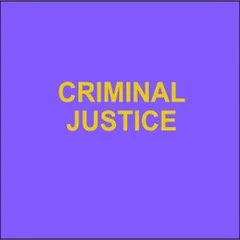By Kaan Yilmazturk, John Williams, Sarah Sandford, Seth Reynolds
Voluntary organisations working in and with the criminal justice system (CJS) face a complex funding landscape. This report explores what funding streams from statutory and philanthropic funders exist, and how they reach voluntary organisations (predominantly charities). We believe that a better understanding of these funding flows can inform changes to funder practice that will help criminal justice voluntary organisations best support some of the most vulnerable people in our society. NPC is a think tank and consultancy for the impact sector. We were commissioned by Lloyds Bank Foundation, with feedback from His Majesty’s Prison & Probation Service (HMPPS), AB Charitable Trust and Clinks, to research the funding landscape for voluntary organisations working in and around the CJS. We adopted a mixed methods approach to this research including: • quantitative data collection on a sample of 624 charities using Charity Commission and 360Giving data • interviews with sector stakeholders (nine charities, five funders, and three advocacy and research organisations respectively) • a survey completed by 55 voluntary organisations working in and around the CJS • case studies conducted on 10 voluntary organisations working with women and racially minoritised people. Funding flows into the criminal justice voluntary sector • Statutory funding makes up double the share of income for criminal justice charities than the wider voluntary sector. 57% of the total income of our sampled criminal justice charities comes from statutory sources, compared to just 26% for the wider voluntary sector. • Almost all statutory funding goes to larger charities. 94% of statutory funding goes to charities with annual incomes above £2m. Charities with annual incomes up to £500k received only 1.42% of statutory funding. o Trusts and foundations are the main source of income for ‘small’ charities (£100k-£500k annual income) and ‘medium-sized’ charities (£500k-£1m annual income) in our sample. o Micro-charities are underrepresented criminal justice funding flows. Of the 624 charities we sampled, 46% had annual incomes of less than £100k. For comparison, 80% of the wider voluntary sector is made up of these charities. • Only 3% of total income goes to criminal justice charities working with specific ethnic groups. Just 7% of sampled charities identified ‘people of a particular ethnic or racial origin’ as the beneficiary group they focus on. o ‘Children/young people’ is the beneficiary group that has received the highest proportion of income over the previous five years. o The most common beneficiary groups selected by charities in our sample are the ‘general public’, ‘children/young people’, ‘other defined groups’, ‘older people’, and ‘people with disabilities’. • Around three-quarters (71%) of criminal justice charities in our sample work on ‘offender support and rehabilitation’. The remaining 29% are classified as ‘prevention and safety’. Education/training’ is the most common subtheme, both in number of charities and the proportion of total income.
London:: lloyds Bank Foundation, 2025. 54p.


